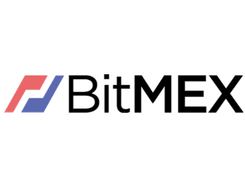This “Merge” is released to end the proof-of-work (PoW) in the Ethereum platform, and this will be of great help to the proof-of-stake (PoS) mechanism.
Here we will give you detailed information on what Ethereum merge means and its working principles.
What is ‘The Merge’?
“The Merge” has become a popular search keyword that emerged from ‘Ethereum Merge’ and serves as proof-of-work (PoW) that joins the Ethereum mainnet and the beacon chain proof-of-stake system.
Over the years, Ethereum’s mainnet usually used the PoW consensus mechanism. This consensus mechanism helps several nodes of a network change in the blockchain network to achieve mutual consensus through its mechanism process. Moreover, ‘The Merge’ is a concept entirely in support of blockchain technology.
Meanwhile, ‘The Merge’ is a simple term that means that two systems are joined together. Using a spaceship to elucidate ‘The Merge,’ Ethereum is like an engine in a spaceship while the beacon chain is like a new engine with advanced features that offer fantastic acceleration to the spaceship.
Why is Ethereum switching to proof of stake (POS)
Ethereum is switching to proof of stake (POS) because the proof of stake allows Ethereum users to easily stake their ETH, which helps them become validators in the Ethereum network.
Being a validator in the Ethereum platform is just like users functioning as miners in the proof-of-work, thereby having access to ordering transactions and creating new blocks that make it possible for all nodes to work on the same network state.
With the Ethereum proof of stake, validators can use computational power when operating on the Ethereum platform. Those validators don’t need any specific number of computational power as they will probably be selected at random.
Meanwhile, validators can create blocks without mining any block when they are selected at random, and they can be able to validate blocks as well. Users being able to validate blocks can be tagged with a general term under the Ethereum network as ‘attesting.’
Moreover, validators are being rewarded when they propose new blocks and also when they validate blocks also. Unfortunately, when an Ethereum validator validates malicious blocks, they will lose their stake.
When Ethereum replaced proof of work with proof of stake, they also added complexity of shared coins which helps validators to be able to process lots of transactions and also create new blocks as well.
How does the decentralization of proof-of-stake (PoS) compare to proof-of-work (PoW)
Proof of stake (PoS) didn’t just improve efficiency in the Ethereum network but also increase its decentralization and censorship resistance.
Moreover, proof of stake (PoS) and proof of work (PoW) are pretty similar in that both are wholly permissionless systems that allow any individual to participate in it.
Meanwhile, both the proof of stake (PoS) and proof of work (PoW) depend on the economic Sybil resistance; this means that the impact that every user will have in this network, as well as the rewards that they will earn, are pretty proportional to the estimated quantity or size of the available economic resources that the user puts in. These financial resources can be seen as computer hardware, electricity, or even coins.
Furthermore, users who intend to join the proof of work (PoW) network will need to purchase mining hardware, giving them access to affordable, cheap, and reliable sources of energy. Also, it will help them have some level of technical skill, which will help them run and manage their mining farm.
In Ethereum, the proof of stake (PoS) is quite friendly to many participants, even the smaller ones. Moreover, participants can join as a validator and begin to stake with as little as 32 ETH.
Do you need 32 ETH to run a validator on the Ethereum network?
To run as a validator on the Ethereum network, you don’t need to have 32 ETH. As 32 ETH is quite a considerable amount of money, participants are allowed, even without the 32 ETH, to become validators to avoid losing their money because of the high risk in cryptocurrency.
Meanwhile, if validators have their 32 ETH, it can serve as solid security in maintaining the network. In as much as this, to become an active validator, you will need to have 32 ETH, which will help you activate your account as a validator.
With the help of services like RocketPool, users with 17.6 ETH or more can be matched with 16 ETH, which is in their RocketPool smart contract by other stakers.
Here users can merge with other users that don’t have up to 32 ETH, or probably they don’t intend to participate as a validator by themselves. Through this process, users can quickly run as validators in the network.
Moreover, eligible users can own their node and run it either on their hardware or on a service like AWS.
Does “The Merge” solve high gas prices (network fees)?
The answer to this question is just NO, as ‘The Merge’ is limited to upgrading Ethereum’s consensus mechanism. As ‘The Merge’ is new, it will not affect already existing users in the Ethereum network as of today.
Meanwhile, future updates concerning the Ethereum roadmap, such as sharding, will eventually increase gas prices. Today, sharding is considered of lower priority than ‘The Merge.’
This process will remove lots of proof-of-work (PoW) energy inefficiency through the Ethereum community.
What is “The Triple Halvening”?
‘The Triple Halvening’ is simply a community name given to the large drop in ETH, which is assumed to occur when ‘The Merge’ occurs and when Ethereum has been fully upgraded to the proof-of-stake (PoS) consensus algorithm.
Moreover, ‘The Triple Halvening’ is like a play on Bitcoin’s “Halving.” Hereunder, as Bitcoin usually has its issuance rate once in 4 years, Ethereum will have its issuance reduced by about 90% when ‘The Merge’ has been fully integrated.
This reduction is equivalent to times 3 (x3) of Bitcoin Halvings that can happen just at a time. Moreover, this issuance reduction in Ethereum may take the next 12 years before Ethereum can be matched on Bitcoin’s network.
Meanwhile, with the current proof-of-work (PoW) model, Ethereum will probably release about 13,500 ETH daily. This will result in an annual issuance of about 4.3% in the overall ETH being supplied.
Hereunder, with the PoS issuance model, ETH is currently being staked on the Ethereum network, and this helps with its determination, primarily when “The Merge” occurs.
Are there any risks currently associated with “The Merge”?
When it comes to cryptocurrency, there are always risks involved, especially when there is a change in the protocol used to secure the assets associated with the network.
Relating to ‘The Merge,’ there won’t be any noticeable risk when there is a change in the Ethereum network, as everything will happen smoothly. This will leverage the beacon chain and proof-of-stake (PoS), which has been in existence for the past few years.
There are about 4 unique client implementations on the PoS Ethereum nodes. This client implementation ensures that when any PoS node operator encounters specific difficulties with the previous performance, they can easily fall back on the other clients available.
Hereunder, participants should have in mind that before ‘The Merge’ will be fully integrated, it must have passed some testing and processes. So there is nothing to panic about.
Conclusion
Ethereum merge, which is a merger between the Ethereum mainnet and the beacon chain proof-of-stake corporation system, follows all the Ethereum processes and protocols.
Participants should know that ‘The Merge’ emerged to end the proof-of-work (PoW) in the Ethereum platform, and this will be of great help to the proof-of-stake (PoS) mechanism.
For more articles about cryptocurrency check out our Top 10 page and follow us on Twitter, Facebook or Instagram.
Written by: Narender Charan






